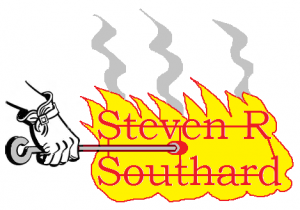While reading Kurt Vonnegut’s novel Timequake recently, I noted he classified writers into two groups: Swoopers and Bashers. He said women tend to be swoopers and men tend to be bashers, adding, “Someone should look into this.” Let’s look into it.
Most writers are familiar with another grouping: plotters and pantzers, but that’s not what Vonnegut was driving at. He wasn’t distinguishing between those who outline and those who don’t. His alternatives focused on the speed of writing a first draft and the number of subsequent drafts.

He said swoopers “…write a story quickly, higgledy-piggledy, crinkum-crankum, any which way. Then they go over it again painstakingly, fixing everything that is just plain awful or doesn’t work.”

By contrast, bashers “…go one sentence at a time, getting it exactly right before they go on to the next one. When they’re done, they’re done.”
Several bloggers have interesting things to say about the swooper/basher contrast, including Shannon Alberta, Philip Martin, Edmund Schubert, Paula Marais, and David Duhr.
Vonnegut himself claimed to be a basher. Why he chose the terms ‘swooper’ and ‘basher’ is a mystery to me. I can see how writing first drafts quickly might suggest swooping, but writing each sentence carefully doesn’t bring the verb bashing to my mind.
Note that neither method relieves you of the need for meticulous, word-by-word editing. It’s just that bashers do that up front, in the first draft, while swoopers edit in later drafts.
In any case, I doubt there is any gender distinction between the two. I suspect the real dividing point has to do with experience. My guess is that beginning writers tend to be swoopers and many of them become bashers later on.
Early on, a writer has no reputation to lose, and thus feels great freedom to experiment and play with words. Such a writer might have a tenuous grasp of the vision for the story, and therefore must write the first draft at breakneck speed to capture that idea in words before it flies away.
Later in life, after having many stories published and developing a readership, that same writer must be more careful. Readers have come to expect a certain style from the author and deviations aren’t appreciated. There is no longer a need to experiment and play to find out what will work in the marketplace. Moreover, such an author has learned, through experience, how to keep the entire story in mind while crafting each sentence in order.
My theory that beginners tend to be swoopers and veterans to be bashers is, itself, an over-generalization. In the end, it’s a matter of style, of finding what works for you. Among famous authors, I suspect you’ll find both swoopers and bashers. You’re free to experiment with both methods to discover which is better for you.
If you somehow separated swoopers from bashers, and then examined your collection of swoopers carefully, somewhere in that group you’d find—
Poseidon’s Scribe

 To understand branding, think of the effort major corporations put into getting customers to associate the corporations’ products and logo with a happy experience.
To understand branding, think of the effort major corporations put into getting customers to associate the corporations’ products and logo with a happy experience.